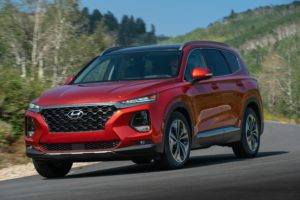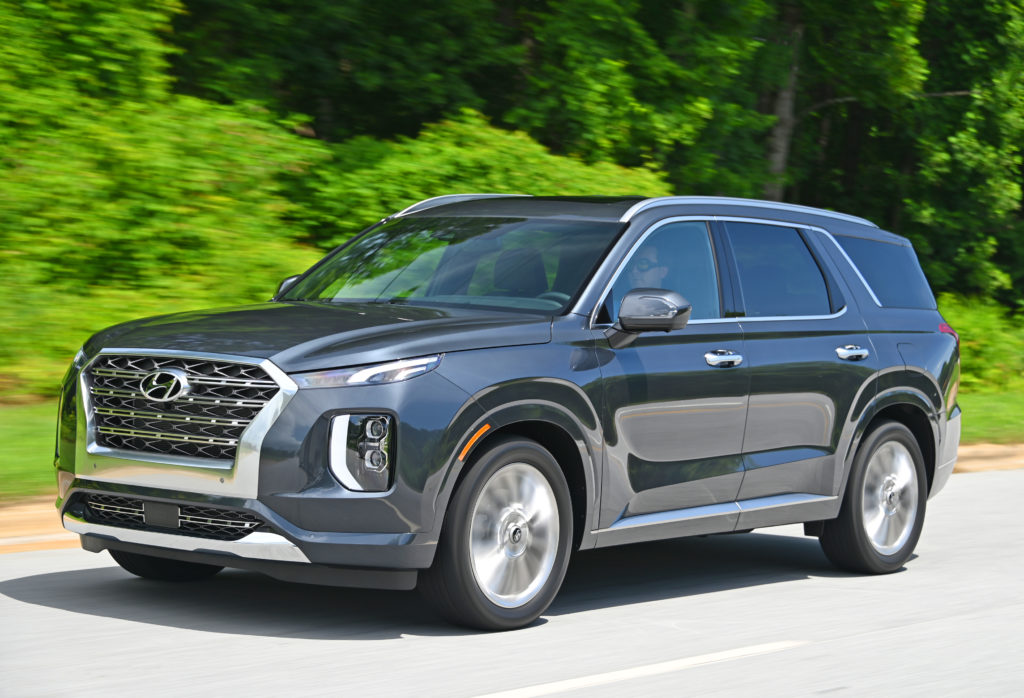
Hyundai posts auto body repair procedures for Santa Fe, Sonata, Palisade, Nexo; G80, others to come
By onAnnouncements | Business Practices | Education | Repair Operations | Technology
Hyundai this week posted OEM collision repair procedures for four models, with a fifth vehicle soon to come and plans to add more of its fleet.
The move delivers a significant resource for collision repairers, auto insurers and consumers and brings the popular automaker more in line with its peers.
All other major automakers, including Hyundai sister company Kia, provide collision repair procedures to dealerships and the independent aftermarket. Without OEM instructions, some collision repairers had advocated automatically totaling Hyundai vehicles rather than attempt to educated-guess their way through the job.
Thanks to Hyundai’s effort, auto body shops can conduct repairs of the 2020-21 Sonata, 2019-20 Santa Fe, 2020-21 Palisade and 2019-20 Nexo with formal guidance from the OEM. Hyundai said it will post the next-generation 2021 Genesis G80’s repair procedures when the model goes on sale. The car is slated to hit North American dealerships in the second half of the year.
“We are currently reviewing 19 other models/model years for publication,” Hyundai wrote in an email Monday. “We are going to prioritize publishing additional body repair manuals by units by in operation.”
Repairers fixing vehicles not yet among the posted make-model-year combinations should send inquiries to BodyRepairQuestions@hyundaiusa.com and BodyRepairQuestions@genesismotorsusa.com, Hyundai said. Asked if shops should attempt to extrapolate from the existing procedures, Hyundai said “No.”
Hyundai in an email Monday explained the reason collision repairers had to wait for the auto body instructions.
“Safety is a priority at Hyundai,” Hyundai wrote. “We needed to do a detailed engineering evaluation of the repair procedures for each vehicle before the body repair manual was published. We wanted to make sure that if these body repair procedures are followed, the repaired vehicle will meet the company’s collision safety and crash protection standards. Carefully following these procedures can provide effective vehicle crashworthiness and occupant protection during a collision as recommended by Hyundai Motor America.”
Hyundai’s fleet tied Subaru’s for the most IIHS 2020 Top Safety Pick or Pick+ models, according to a February Hyundai news release. Hyundai bodies also tend to carry significant concentrations of higher-strength steels. (The broader Hyundai conglomerate owns a steelmaker, which probably helps on this front.)
Hyundai already made mechanical repair procedures available to the aftermarket, and the collision repair instructions are housed or will be housed on the same websites: HyundaiTechInfo.com and GenesisTechInfo.com. Hyundai said the sites should function the same on the Chrome, Microsoft Edge and Internet Explorer 11 browsers.
The existing Hyundai repair site subscriptions will include the new body repair manuals as well. Hyundai charges $40 for a day’s access to its service information, $60 for a month and $600 for a year. Genesis charges $100 per week, $250 per month and $2,500 per year.
“Hyundai is currently working to provide aggregate sites the repair procedures,” Hyundai wrote, referring to third-party licensee sources like ALLDATA.
Hyundai Recognized Collision Repair Centers receive free access to HyundaiTechInfo.com, and the same holds true for Genesis-certified shops and GenesisTechInfo.com.
The new instructions were written by research and development and service engineering teams in South Korea and will provide repairers with “General Body Information, Body Construction, Dimensions, Panel Repair Procedures, Sealing Locations, Corrosion Protection, Tools Information,” according to Hyundai.
We asked if anything significant wouldn’t be present in the collective Hyundai information (body, mechanical, etc.) now available to the aftermarket, offering calibration and welder equipment specifications as hypothetical examples.
“Welder equipment specs will not be in the body repair manuals. Calibrations of other systems (such as ASAS features) are in the shop manuals,” Hyundai wrote. (Emphasis Hyundai’s.)
The site doesn’t permit shops to search for build data with a VIN, according to Hyundai. However, “Using the VIN search feature on the body webpage automatically finds the model year and the manuals associated with that model year,” the OEM said.
Hyundai will support repairers with questions about its repair instructions. “Hyundai body repair questions should go to BodyRepairQuestions@hyundaiusa.com. Genesis body repair questions should go to BodyRepairQuestions@genesismotorsusa.com,” it wrote. The OEM said it would monitor email volume and consider the possibility of a hotline as well.
Hyundai also will participate in the “Ask I-CAR” service, in which the collision education provider serves as a middleman connecting shops with technical questions to OEM answers.
Though Hyundai hadn’t at the time released collision repair procedures, it had issued collision repair position statements on wheel repair, clipping and scanning at least as far back as 2018, as well as an alternative parts position document at least as as early as 2016.
Now that it is issuing collision repair procedures, we asked Hyundai’s philosophy on position statements. Some automakers have openly eschewed them to promote the actual repair procedures. Other OEMs have been more bullish about the documents.
“Yes we do foresee producing more collision position statements,” Hyundai wrote. “As new technologies become available we will move with the times and the findings to ensure customer satisfaction and safety.”
More information:
HyundaiTechInfo.com OEM procedures site
GenesisTechInfo.com OEM procedures site (G80 procedures posting when model goes on sale)
Images:
The 2019 Hyundai Santa Fe is one of the models to receive Hyundai’s first wave of publicly available U.S. collision repair procedures. (Provided by Hyundai)
The 2020 Hyundai Palisade is one of the models to receive Hyundai’s first wave of publicly available U.S. collision repair procedures. (Provided by Hyundai)

